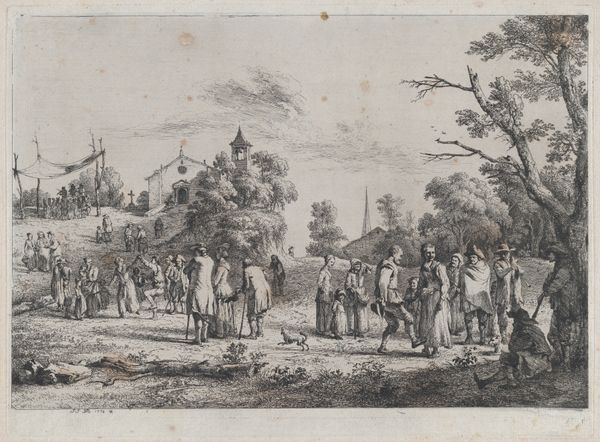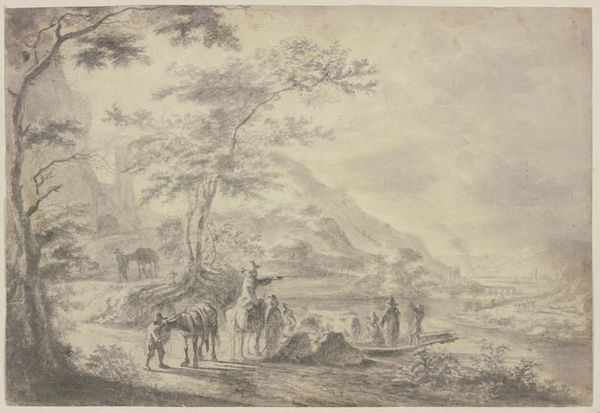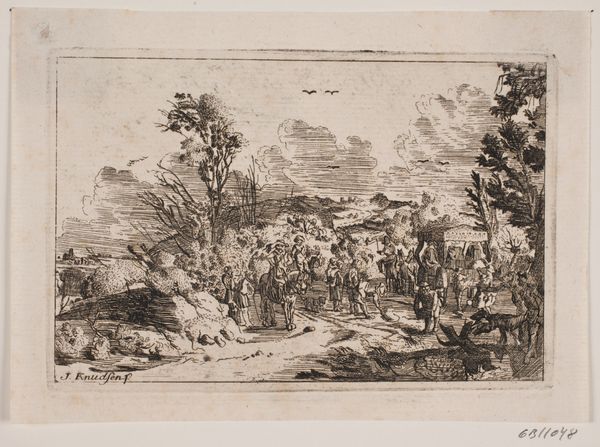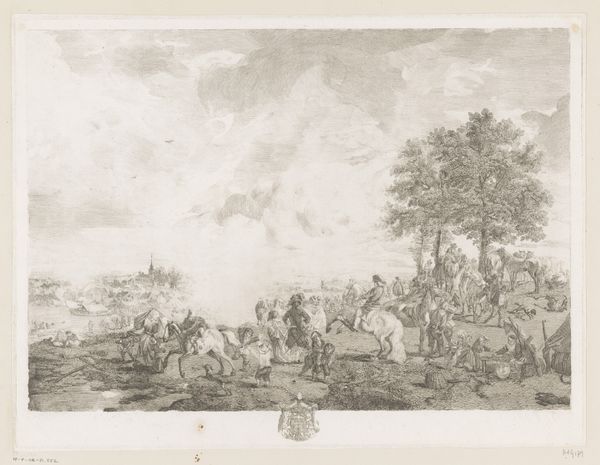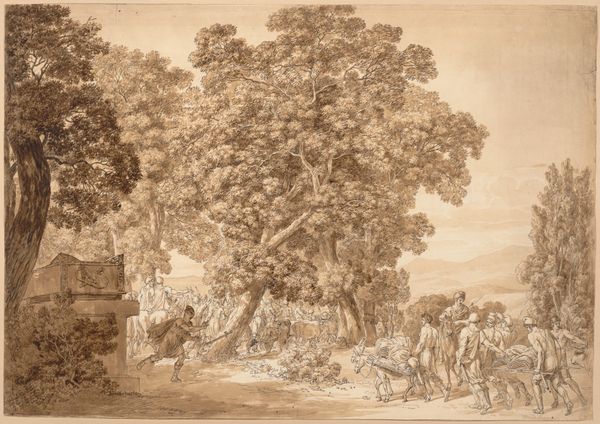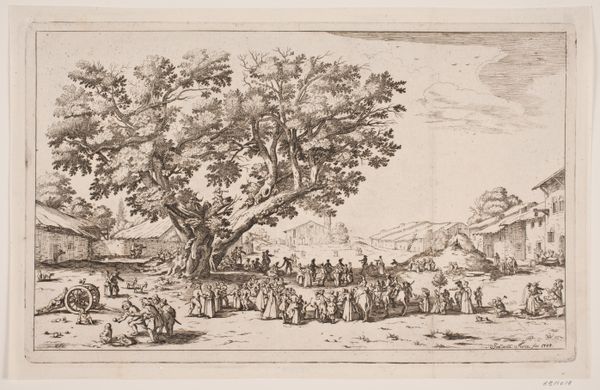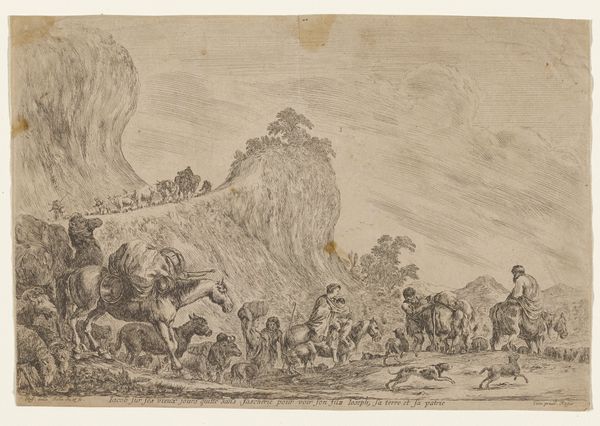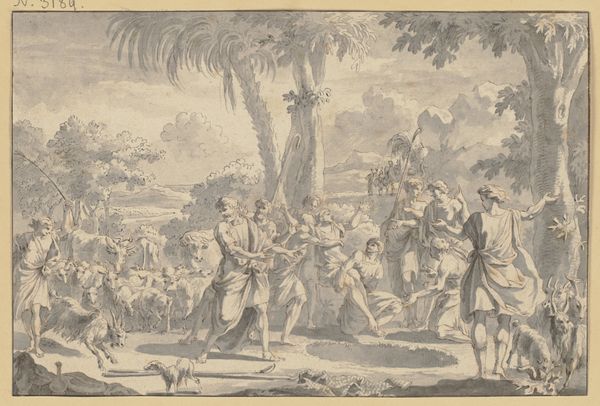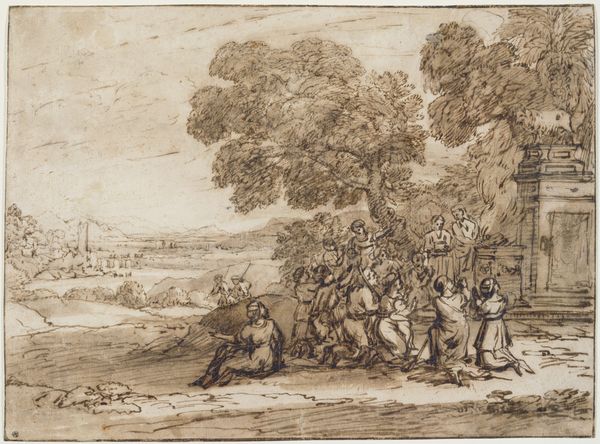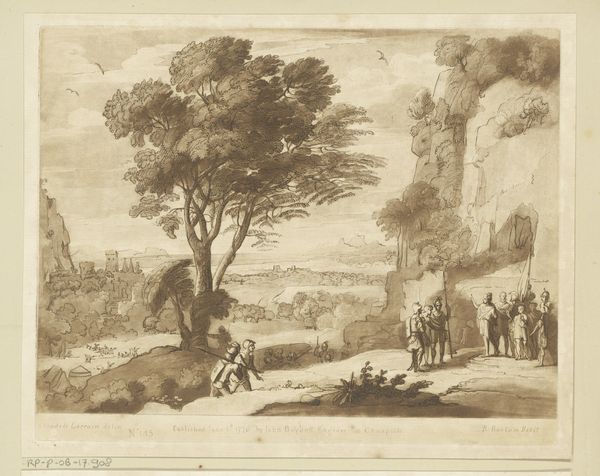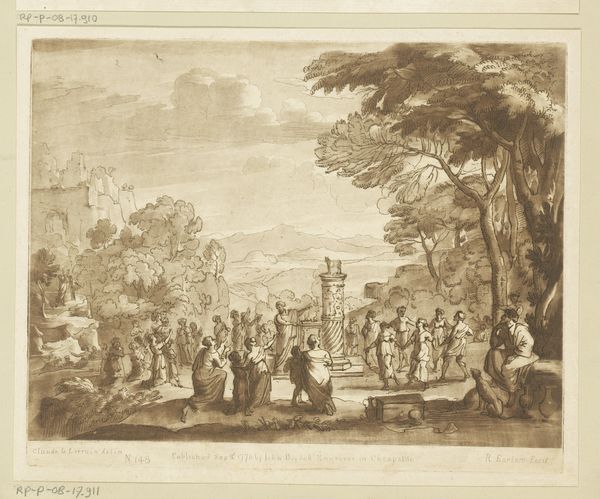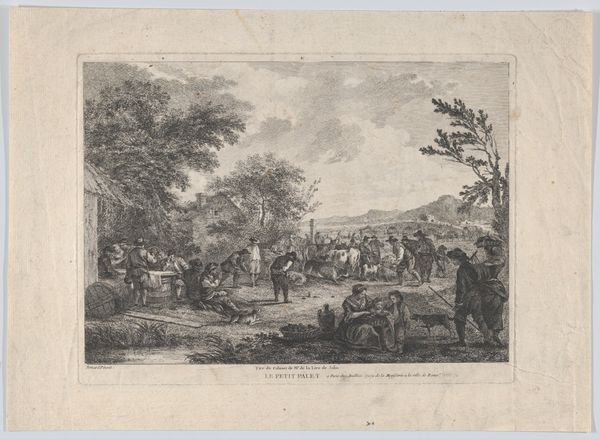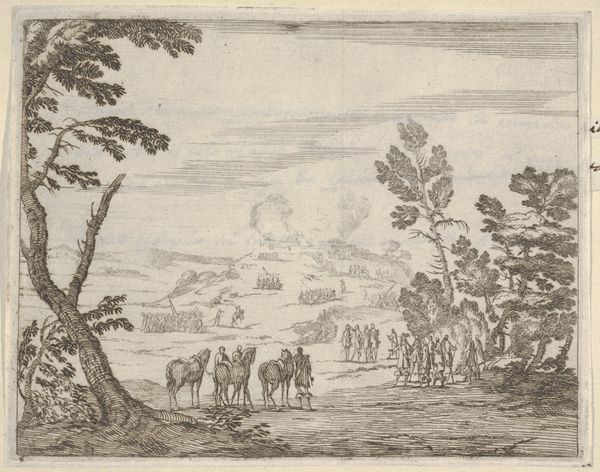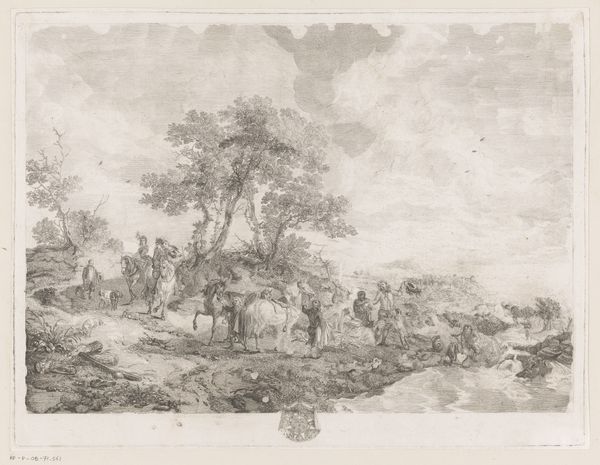
Dimensions: sheet: 29.1 × 40.2 cm (11 7/16 × 15 13/16 in.)
Copyright: National Gallery of Art: CC0 1.0
Editor: This is "Soldiers in a Windy Landscape" by Jean-Baptiste Le Paon, possibly from 1770, created using pencil and charcoal. The chaotic scene and muted colors make it feel so ominous. How do you interpret this work? Curator: What immediately strikes me is the depiction of nature's force against the backdrop of human activity. The exaggerated bending of the trees tells us a lot, doesn’t it? How might the socio-political climate of 18th-century France informed Le Paon’s decision to emphasize environmental volatility? Editor: That's an interesting angle. So you're thinking that the turbulent landscape may mirror societal unrest? Curator: Precisely. And consider where a work like this might have been displayed or circulated at the time. Was it meant for private viewing among the elite, or did it have a broader public role? Such contexts drastically change how we understand its meaning. How would this differ, say, from battlefield paintings commissioned by royalty? Editor: So, a more staged and idealized scene is legitimizing power and authority... and this drawing is different? Perhaps critiquing it? I didn't even consider where something like this may have been shown at the time, thanks for pointing that out! Curator: Yes, or simply representing it. Perhaps reflecting a shift towards valuing individual experience over collective ideals. These details really let us appreciate how artwork engaged with and shaped public sentiment. It prompts us to question who it depicts and the messages it conveys, within its original context. Editor: It gives a lot more nuance than just noting "it is" a romantic landscape with soldiers. It provides an active function. It all becomes more interesting when placed into context! Curator: Indeed. This windy landscape and company of soldiers gives us more to look at with that frame of analysis.
Comments
No comments
Be the first to comment and join the conversation on the ultimate creative platform.
